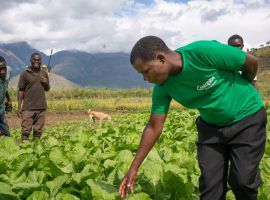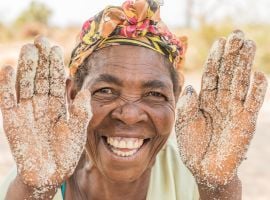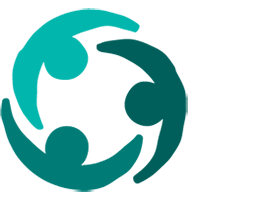
Knowledge Hub
How families are fighting hunger from their homes
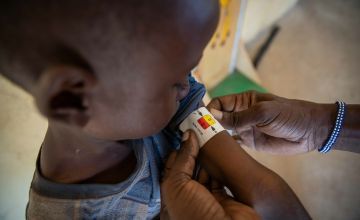
A few years ago, we collaborated with the innocent foundation to launch an innovative project to fight hunger from the home. Now, joining forces once again, we have launched a brand new initiative to achieve our shared mission: combatting global hunger.
Here is everything you need to know about this pioneering project.
Fighting malnutrition starts at home: the previous project
In 2019, with support from the innocent foundation, we began a study in northern Kenya. The project, known as ‘Mama MUAC’, taught mums and caregivers how to use a MUAC (mid-upper arm circumference) screening band - used to assess and diagnose malnutrition - so that they were able to monitor their children at home. This was an alternative strategy to the standard approach where typically, Community Health Volunteers (CHVs) lead malnutrition screening, to improve early detection, referral and prevention of malnutrition among children under the age of five in pastoralist communities.
The study revealed that mothers have the capacity and motivation to accurately and routinely measure and refer their own children for treatment of malnutrition. It suggested that:
- Mothers' screenings contribute to early identification and referrals of children for nutrition management;
- That mothers are accurate in their measurements;
- That around 60% measure their children habitually.
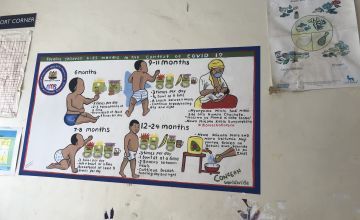
Other findings showed that the MAMA MUAC has the potential to contribute to early referrals of malnourished children, with 73% of the referred children being moderately malnourished. The success of the previous study however is not the only reason we are piloting this project. The standard approach of CHV led screening and referral is sub-optimal. A recent survey showed there were issues due to not enough CHVs, competing demands on their time, capacity, and large distances between households and facilities.
This reinforces the idea that in order to better diagnose, treat and prevent malnutrition; we need to expand the Family MUAC (including mothers, caregivers and fathers) approach in similar areas that report high cases of malnutrition. However, for governments to commit the resources that would enable this expansion there is a need for more evidence on the effectiveness and cost-effectiveness of the approach.
This is where our second initiative comes in.
Evidence is key
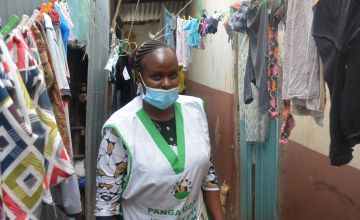
Through this new study funded by the innocent foundation, we hope to provide tangible evidence on the success and cost effectiveness of integrating the Family MUAC approach into standard Community Health Volunteer-led screening and referral for malnutrition in Kenya. We do not want to replace the old approach, we want to augment and improve it. Fundamentally, we will be asking this question: is screening children under five for malnutrition by mothers, fathers and other caregivers, combined with the standard CHVs, more successful and cost-effective than screening by CHVs alone?
By comparing this new, integrated approach to the current method of managing malnutrition, we hope that the evidence gathered will help Kenyan health authorities to make informed plans to scale up the Family MUAC approach and outline how much it is likely to cost. The project will also provide practical recommendations on how to design and resource the scale up of the approach, which the government also requires.
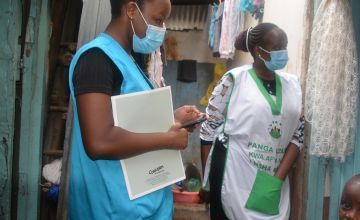
The project will last until September 2023. The project will contribute significantly to the growing knowledge on family MUAC and position the approach for further scale. Family MUAC is one of the recommended approaches recommended by the Government to end acute malnutrition especially during the COVID 19 pandemic. In addition, with the ongoing drought emergency, the worst in 40 years where over 942,000 children in Kenya are in need of treatment for malnutrition, Family MUAC has the potential to mitigate against more losses of our children’s lives through early screening and early referral and therefore timely treatment.
Other ways to help
Donate now
Give a one-off, or a monthly, donation today.
Join an event
From mountain trekking to marathon running, join us for one of our many exciting outdoor events!
Buy a gift
With an extensive range of alternative gifts, we have something to suit everybody.
Leave a gift in your will
Leave the world a better place with a life-changing legacy.
Become a corporate supporter
We partner with a range of organisations that share our passion and the results have been fantastic.
Create your own fundraising event
Raise money for Concern by organising your own charity fundraising event.
